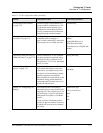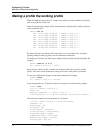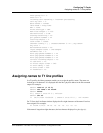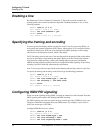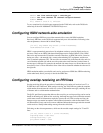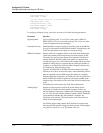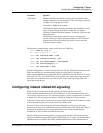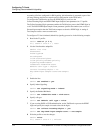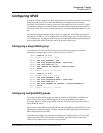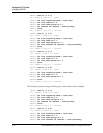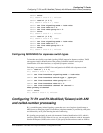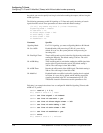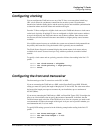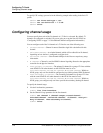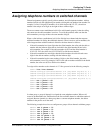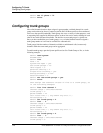
Configuring T1 Cards
Configuring NFAS
APX 8000/MAX TNT/DSLTNT Physical Interface Configuration Guide Preliminary May 9, 2000 7-13
Configuring NFAS
A group of T1 lines configured for NFAS signaling shares a D channel. One line in the group is
configured with a primary D channel, and another line is configured with a secondary
D channel. The secondary D channel is used only if the primary line fails or receives a signal
commanding a change to the other D channel. All lines within an NFAS group must reside on
the same slot card. Your service provider must supply you with the NFAS ID numbers for your
line.
The TAOS unit supports multiple NFAS groups on a single card. An NFAS group contains a
minimum of two PRIs. A T1 card supports up to four NFAS groups, and a T3 card supports up
to 14 NFAS groups. To configure an NFAS group, you must set the NFAS-group-ID parameter.
Lines with the same NFAS-group-ID value are in the same NFAS group.
Configuring a single NFAS group
To configure two T1 lines for NFAS, proceed as in the following example, in which the
administrator configures ports 3 and 4 of the card in slot 2 of shelf 1:
admin> read t1 {1 2 3}
T1/{ shelf-1 slot-2 3 } read
admin> set line enabled = yes
admin> set line signaling-mode = isdn-nfas
admin> set line nfas-id = 0
admin> set channel 24 channel = nfas-primary
admin> write
T1/{ shelf-1 slot-2 3 } written
admin> read t1 {1 2 4}
T1/{ shelf-1 slot-2 4 } read
admin> set line enabled = yes
admin> set line signaling-mode = isdn-nfas
admin> set line nfas-id = 1
admin> set line channel 24 channel = nfas-secondary-d
admin> write
T1/{ shelf-1 slot-2 4 } written
Configuring multiple NFAS groups
To configure multiple NFAS groups, you must first obtain an NFAS ID for each DS1 from
your service provider and an NFAS group ID for each group of PRI lines that shares a
D channel. Within an NFAS group, all PRIs share the same NFAS-group-ID value and have
unique NFAS-ID values.
Telcos often use NFAS-ID=0 for the PRI with the primary D-Channel, and NFAS-ID=1 for the
PRI with the secondary D channel. You must set both the NFAS-group-ID parameter and the
NFAS-ID parameter for each DS1.
In the following example, an administrator configures two NFAS groups on a T1 card. Each
group contains four DS1s. The example uses the NFAS group IDs 1 and 2, but the actual
values you use depend on how your lines are provisioned.



